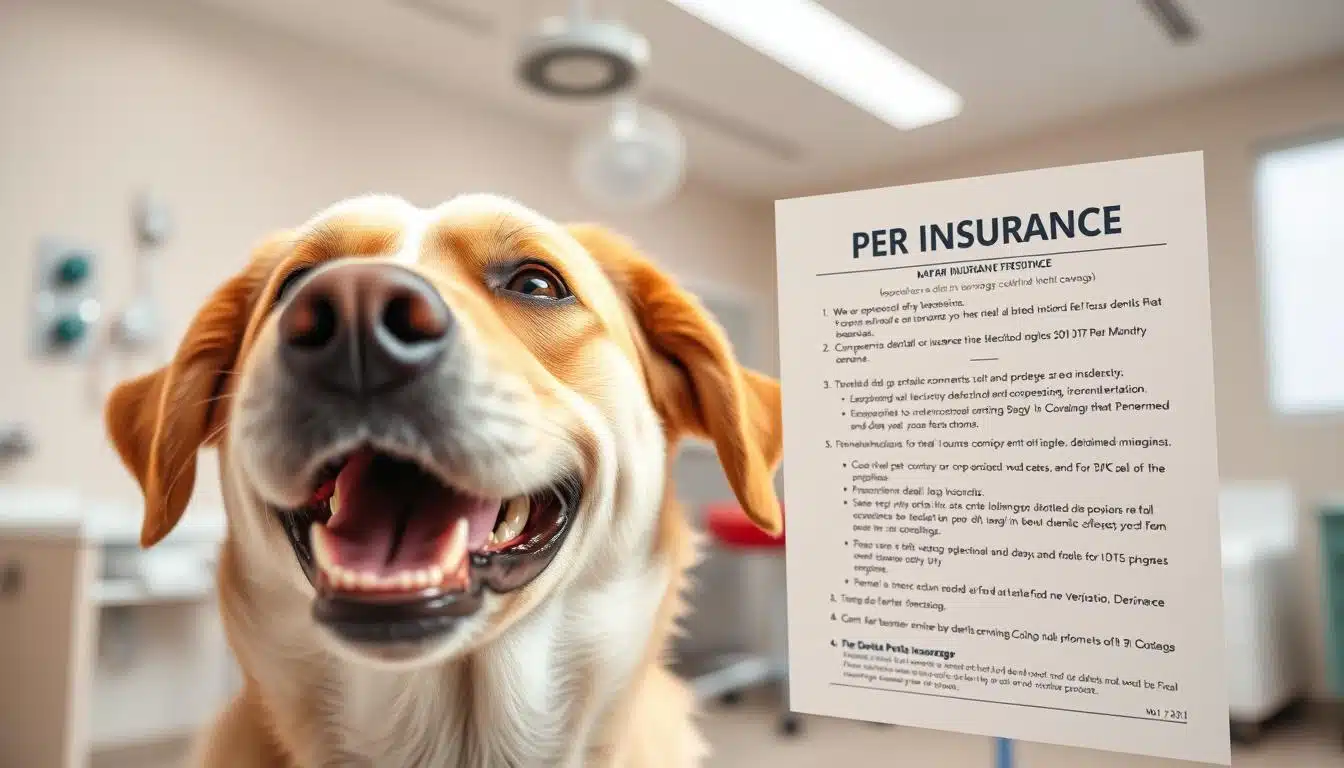Therapy Dog International insurance typically provides liability protection for handlers and their therapy dogs during visits and events, covering accidents, injuries, or property damage. It ensures handlers, organizations, and facilities are financially protected, since regular pet insurance usually doesn’t apply to therapy work.
As an insurance and therapy-dog policy advisor, I recommend every handler understand how therapy dog international insurance works before visiting facilities. Proper coverage protects handlers, their dogs, and the people they serve from liability and unexpected legal costs during therapy visits. Therapy Dogs International (TDI) helps by offering liability protection tied to membership, but the details—limits, exclusions, and whether coverage is primary or excess—matter when you plan visits.
This guide explains how TDI membership and insurance fit into broader protection for therapy dog teams, how coverage differs from regular pet insurance, and practical next steps for handlers and organizations. If you’re interested becoming member or advising one, keep reading for the essentials and quick actions to confirm your coverage.
Table of Contents
ToggleKey Notes;
- Therapy Dogs International provides liability coverage for registered teams (see TDI for current limits and policy details).
- Membership and the associated insurance are commonly required by hospitals, schools, and care facilities before visits.
- TDI membership has age and testing requirements; handlers and therapy dogs must meet TDI standards to remain covered.
- Coverage protects against many visit-related incidents, but regular vet bills and non-therapy activities are typically excluded—this is different from pet insurance.
- Nonprofits and volunteer teams can often add facilities as additional insureds for a fee; check TDI membership pages and your insurer for exact steps
Key actions: Check your TDI membership & insurance FAQ, verify current limits and whether coverage is primary or excess, and download/print your proof-of-insurance before visiting a facility.
The Importance of Therapy Dog International Insurance for Therapy Dog Handlers
TDI insurance is a cornerstone of safe, sustainable therapy dog work. Therapy Dogs International is a longstanding organization (founded in 1976) that certifies teams and facilitates liability coverage tied to membership — details and current team counts should be verified on TDI’s site for the latest figures.
Overview of Therapy Dog International (TDI)
TDI’s mission is to improve lives through visits by certified therapy dogs and their handlers. The organization supports thousands of registered teams across the U.S. and Canada and runs programs that place therapy dogs in hospitals, schools, and care settings. TDI’s role is primarily as a certifier and membership organization that arranges liability protection for volunteers; handlers should confirm whether a policy is primary or excess and which carrier underwrites it by checking the TDI membership/insurance FAQ.
Common breeds seen in therapy work include Labradors and Golden Retrievers, but TDI accepts a wide variety of dogs that meet temperament and health standards. The organization also provides program frameworks (for example, Tail Waggin’ Tutors and assisted living initiatives) that connect therapy teams with facilities in need.
Mission and Impact on Communities
Therapy dogs do more than provide comfort — they contribute to measurable emotional and social benefits for people in pediatric wards, nursing homes, schools, and community programs. Academic and veterinary sources (see AKC guidance and peer-reviewed studies) document reduced stress and improved engagement during visits.
Beyond wellbeing, TDI’s membership-linked insurance helps institutions and volunteer programs manage risk so visits can continue. For example, a regional hospital volunteer coordinator reported that after requiring proof of liability coverage, a local TDI-registered handler was able to continue weekly visits without interruption because the facility could be added as an additional insured on the team’s policy (anonymized program example — confirm specifics with the facility and TDI).Because TDI functions as both a certifying body and an organizer of group coverages, handlers and nonprofit programs should always review TDI’s membership instructions, confirm carrier details, and, where needed, obtain supplemental personal or organization insurance to cover paid work or activities outside the scope of TDI’s volunteer policy.
Understanding Therapy Dogs
Therapy dogs provide structured comfort and social support in settings like hospitals, schools, nursing homes, and community centers. Unlike service dogs, which perform legally protected tasks for an individual under the ADA, therapy dogs are trained to provide emotional comfort and engagement to many people during visits.
Therapy Dogs International (TDI) reports thousands of registered teams across the U.S. and Canada; confirm current totals on TDI’s official site. TDI accepts a wide variety of dogs that meet temperament and health standards (common breeds include Labradors and Golden Retrievers, but breed is not the sole criterion). Handlers and their therapy dogs must pass evaluation to demonstrate calm, friendly behavior suitable for multi-person therapy work.
There are several types of animal-assisted support: therapy animals that visit groups, service animals that assist one person with disabilities, and emotional support animals that provide comfort to their owners (emotional support animals typically do not have the same access or task-based training as service dogs). Sources such as the American Kennel Club and TDI provide clear distinctions and guidance for handlers. TDI arranges membership-linked volunteer insurance for participating teams, which helps protect therapy dog handlers while they volunteer. For example (anonymized), a pair of therapy dog teams visiting a school avoided out-of-pocket liability after a visitor slipped on a hallway mat—TDI’s coverage and proper documentation helped the school and handlers resolve the incident without prolonged interruption to the program. Always verify coverage details, and consider supplemental policies for paid work or activities outside TDI’s scope.
Purpose and Roles in Society
Understanding how different animals serve the public is essential for handlers, facilities, and insurers. Therapy dogs, service dogs, and emotional support animals each provide distinct forms of help and have different legal recognitions and insurance implications.
Therapy Dogs vs. Service Dogs vs. Emotional Support Animals
When comparing therapy dog vs. service dog, the core difference is purpose: service dogs perform task-based assistance for one person with disabilities and are protected under the ADA; therapy dogs provide comfort and support to many people in group or facility visits; emotional support animals provide comfort to their owners but generally lack public access rights.
Insurance implications vary: service dog-related incidents are usually handled under the handler’s personal liability or homeowner’s insurance if applicable; therapy dogs frequently require specific liability coverage (like TDI’s membership-linked policies) for facility visits; emotional support animals rarely carry commercial visit insurance and often need alternative arrangements when visiting facilities.
Therapy dogs typically visit hospitals, schools, assisted living, and community centers to improve mood, reduce stress, and support rehabilitation. For authoritative definitions and ADA guidance, refer to the Americans with Disabilities Act resources and the American Kennel Club’s guidance pages..
Therapy Dog International Requirements
To be a therapy dog team with Therapy Dogs International (TDI), you must meet certain therapy dog international requirements. The TDI registration process checks if the dog and handler are ready. Dogs need to be healthy and well-behaved for therapy work.
Handlers must follow rules and be good at handling their dogs in different places. They make sure people get the support and comfort they need.
Dog Eligibility Criteria
Evaluating whether a dog is ready for therapy work focuses on health, temperament, and appropriate training. Clear eligibility rules protect the dog, the handler, and the people the team serves during visits.
Handler Qualifications
Good handlers demonstrate responsibility, awareness, and the ability to manage their therapy dog in public settings. Typical expectations include a background check and age requirements; many programs (including TDI) allow handlers as young as 12 with adult supervision for minors under 18. Handlers must show consistent, calm control of their dogs during visits and follow facility rules.
Practical handler skills include basic positive-reinforcement training, reading canine body language, and clear communication with facility staff. These skills lower incident risk and support safe, effective therapy visits.
Registration Process with TDI
Registering a team with Therapy Dogs International involves a documented process that typically includes an application, submission of veterinary records, and an evaluator test. Exact timelines can vary; many handlers report that a complete application and scheduling the evaluator step are the main time factors. Always check TDI’s official registration page for up-to-date processing times and instructions.
Step-by-step Guide to Certification
Follow these practical steps to get certified:
- Prepare required documents (see list below).
- Practice handler skills and socialization exercises with your dog.
- Register online with TDI and pay any applicable fees.
- Schedule and pass the evaluator test with a certified TDI evaluator.
- Once approved, maintain records and log visits to keep membership and insurance current.
Documents to prepare (common requirements):
- Current vaccination records (rabies, DHPP/DA2PP, as required).
- Veterinary health certificate or proof of routine care.
- Photo ID and proof of handler age (if applicable).
- Completed application and payment receipt.
Real-world vignette (anonymized): a 16-year-old handler completed the evaluation with an adult sponsor, submitted vaccines and health records, and began weekly visits at a pediatric unit after registration—showing how youth handlers can participate responsibly with correct documentation and supervision.
Download the TDI registration checklist from the Member Portal before you apply, and schedule at least two practice visits to local community events to build experience before the evaluator test.
Do You Need Insurance for a Therapy Dog?
As a therapy dog handler, knowing about insurance for therapy dogs is key. Many wonder, do therapy dogs need insurance? The answer is a clear yes. This Yes — handlers and teams doing therapy dog visits should have appropriate liability protection. While many therapy dogs and their teams receive membership-linked coverage through organizations like Therapy Dogs International (TDI), that protection is designed for volunteer therapy work and has specific conditions. Relying only on personal pet insurance is risky because regular pet policies typically exclude claims arising from public therapy visits and organized programs.
Insurance is especially important for visits to schools, hospitals, assisted living and other facilities where organizations often require proof of liability coverage before allowing visits. Even with group protections from TDI, some handlers choose supplemental personal general liability or umbrella policies when they do paid therapy work, lead programs, or need higher limits.
Activity and membership rules (such as logging visits) affect coverage. For example, some programs require teams to log visits regularly so the organization can verify active participation; lapses in activity can trigger reassessment or retesting. Confirm the exact visit-frequency and reporting requirements on your TDI member portal or the membership/insurance FAQ, since these rules can change.
| RequirementTypical Timeframe / Note | |
| Complete a documented therapy visit | Often recommended at least every 3 months to remain active — verify with TDI |
| Handling assessment & observation | May be required after ~3 months of inactivity (policy-specific) |
| Lapsed coverage & retesting | Full retest is commonly required after extended inactivity (e.g., 6+ months) — check current TDI rules |
| Submit incident or observation paperwork | Submit within facility/portal deadlines (example: within 7 days) — confirm exact timing with TDI |
Do I still need personal insurance?
Short answer: sometimes. If you only volunteer under a TDI membership and the organization’s policy covers the activity with adequate limits, you may be sufficiently covered for typical volunteer visits. If you do paid therapy work, lead a nonprofit program, host events, or want higher limits/primary coverage, speak with an insurance agent about handler accident insurance, personal general liability, or a commercial policy for nonprofit therapy animal programs.
Legal Liabilities and Risks
Therapy dog work brings great rewards but also legal exposure. Any time your dog interacts with the public there is a non-zero risk of an incident—bites, slips, property damage, or medical reactions—that can trigger claims. Understanding those risks and preparing in advance keeps handlers, dogs, facilities, and the people in your care safer.
Prevention is the first line of defense. Build a safety plan that combines consistent training, keen observation of canine body language, and clear coordination with facility staff. Practical measures include:
- Regular refresher training to reinforce reliable obedience and calm behavior in busy environments.
- Education for handlers on stress signals and de-escalation so they can remove a dog before a situation escalates.
- Pre-visit briefings with facility staff to define boundaries (where the dog may go, who may touch the dog, food/allergy policies).
Even with prevention, incidents can occur. Canine liability insurance (including the membership-linked coverage TDI provides) shields teams from the financial consequences of covered claims—legal defense costs, settlements, or judgments. Note that coverage terms vary: some policies are excess over a primary carrier, limits differ, and medical payments for humans or veterinary bills are not always included. Always read the policy and ask the insurer or TDI representative whether a given incident would be covered.
Humanized vignette (anonymized): during a senior-center visit a resident tripped on a leash; the facility and handler were added as insureds on the team policy, and the claim was handled without the handler paying out-of-pocket. This illustrates how pre-approved coverage and prompt reporting protect both the program and individual volunteers.
Legal environment: laws and liability standards vary by state, and some facilities maintain their own insurance requirements. For program operators and nonprofit therapy animal programs, consult nonprofit insurance guidance and your carrier for state-specific rules and recommended coverages.
Before a new facility visit — quick checklist:
Carry a printed incident form and your TDI membership/insurance proof.
Confirm facility insurance requirements and provide proof of coverage.
Ensure the dog’s vaccinations and health records are current and available.
Agree on visit scope, participant limitations, and incident reporting procedures with staff.
Benefits of Having Insurance
Having appropriate insurance for therapy work delivers practical and emotional benefits. The right policy protects handlers, their therapy dogs, and the people they visit from the financial fallout of accidents or claims, so teams can focus on delivering consistent, compassionate visits to many people in need.
Protection for Handlers, Dogs, and Those You Serve
Core advantages of carrying therapy-dog liability coverage include immediate financial protection when incidents occur and support for the hosting facility or nonprofit program. Coverage typically helps with legal defense costs and settlements for covered claims, and it reduces the risk that a single event will interrupt ongoing community programs.
For example (anonymized): a school required proof of liability coverage before allowing classroom visits; when the handler provided TDI membership documentation and added the school as an additional insured, the program continued without delay—showing how insurance keeps visits running smoothly.
Summary of common coverage benefits:
| Coverage BenefitDescription | |
| Liability Protection | Helps pay claims for injury or property damage that occur during therapy visits (policy-specific). |
| Legal Defense Costs | Provides financial support for legal representation related to covered claims. |
| Peace of Mind | Reduces stress for handlers and facilities so they can focus on therapeutic goals. |
| Program Continuity | Allows nonprofits and facilities to accept volunteer teams with verified protection, supporting long-term community engagement. |
- Quick: What’s usually covered — and what’s notOften covered: third-party injury, property damage, and legal defense for incidents during documented therapy visits.
- Usually not covered: routine veterinary care, pre-existing dog illnesses, intentional acts, or non-therapy pet activities (these are typically the domain of pet insurance or separate vet plans).
Always confirm the exact inclusions and exclusions with TDI’s insurance FAQ and your policy documents.
For more authoritative guidance, consult Therapy Dogs International’s membership and insurance pages and nonprofit insurance resources when your program operates in schools, hospitals, or assisted living facilities.
Understanding the difference between TDI insurance and personal insurance for therapy dogs is essential when planning visits or running a program. TDI’s membership-linked coverage is designed primarily for volunteer therapy dog work and has specific limits and conditions; personal policies (personal umbrella, commercial general liability, or handler accident insurance) may be necessary for paid work, higher limits, or activities outside TDI’s scope.
Comparing Coverage Options
High-level differences:
| Type of InsuranceTypical PurposeTypical CoverageWhen Facilities Require It | |||
| TDI / Organization-linked | Volunteer therapy visits by registered teams | Liability for visit-related injury/property damage; limits and excess/primary status vary — verify current TDI policy | Common requirement for routine volunteer visits to hospitals, schools, and assisted living |
| Personal General Liability / Umbrella | Broader personal liability for incidents you’re personally responsible for | Higher limits and primary coverage options available; may cover incidents outside volunteer activities | Recommended if you do paid therapy work, lead programs, or want extra protection |
| Commercial / Nonprofit Program Policy | Insurance for organizations running therapy programs | General liability, D&O, volunteers coverage, property — tailored to program needs | Required when a program is operating under an organizational banner |
Note: Specific dollar limits (for example, “$1M per incident / $3M aggregate”) have been reported in some summaries of TDI coverage. Always confirm the current limits, whether a policy is primary or excess, and the carrier details directly on TDI’s membership/insurance FAQ or policy documents before relying on those numbers.
- Practical minimums and rules to confirm: minimum dog age, minimum handler age, maximum dogs per visit, testing fees, and renewal/retention rules — all set by TDI and occasionally updated.
- Volunteer vs. paid work: TDI coverage typically focuses on volunteer activities; paid therapy work usually requires a separate commercial or personal policy with explicit coverage for paid services.
Therapy Dog International Rules and Regulations
Maintain your membership and follow TDI rules to preserve coverage — timely renewals, evaluator compliance, and activity logging are common requirements. Facilities will often require current proof of insurance and may request to be named as an additional insured (TDI and other policies commonly provide a mechanism for that, sometimes for a fee). Check TDI’s official pages for exact renewal dates, late fees, and retesting policies.
If you do paid therapy work : consult an insurance agent. Questions to ask: Is my policy primary for therapy visits? Does it cover paid services? Are facilities able to be added as additional insureds? What are the limits and deductibles for liability and legal defense?
Code of Conduct for Handlers and Dogs
Professionalism, consistency, and clear boundaries are essential for safe therapy visits. A concise handler code of conduct helps set expectations for behavior, scheduling, and interactions so that handlers, their teams, facility staff, and the community all have predictable, positive experiences.
The following guidance is practical and aligns with common TDI expectations—confirm any program-specific rules with the facility and your TDI membership materials.
Expected Behavior During Visits
Handlers and their dogs should model calm, respectful behavior at all times. Key expectations include arriving on time, keeping the dog leashed and under control, monitoring the dog’s comfort and stress signals, and following facility-specific rules about touching, patient interaction, and food.
Approved Facilities and Scheduling
Many programs require visits only to approved facilities or those that have agreed to the team’s presence. Before a first visit, confirm the facility’s requirements (proof of insurance, vaccination records, ID) and schedule a site contact to review expectations. Keep a record of approvals and visit confirmations in your Member Portal or team folder.
Dress Code and Identification
Presenting as a professional team builds trust. Wear tidy, facility-appropriate clothing and visible identification: handler name badge, TDI membership card, and a clearly labeled dog vest or harness if available. Carry printed proof of insurance and vaccination records in case staff ask for documentation.
Before You Visit — Quick Checklist (printable)
- Confirm facility approval and any insurance requirements.
- Bring printed proof of TDI membership/insurance and vaccination records.
- Wear professional ID and ensure the dog’s vest/collar is labeled.
- Review facility rules (where the dog may go, participant handling, food/allergy policies).
- Plan an incident response (how to remove dog, who to notify, where to document).
Overview of TDI Insurance Coverage: TDI provides membership-linked liability protection for registered teams (verify current limits and policy details in your membership packet). Always confirm whether a facility needs to be added as an additional insured and the process/fee to do so before your visit.
Downloadable resources: include a “Visit Conduct Checklist” and a short scheduling email template for facility staff—these materials help streamline approvals and demonstrate professionalism to administrators and volunteer coordinators.
What TDI Insurance Covers

Therapy Dogs International (TDI) provides membership-linked liability protection designed to support volunteer therapy work. Understanding what TDI insurance covers helps handlers and teams plan safe visits and answer facility requirements for proof of coverage.
At its core, TDI’s program focuses on general liability for documented therapy visits: that means coverage for third-party bodily injury or property damage that occurs during an approved visit, and in many cases assistance with legal defense costs for covered claims. The exact wording, limits, and whether coverage is primary or excess can change; always verify the current policy and carrier information on TDI’s membership & insurance FAQ.
Typical examples of claims that are often covered (policy-specific):
- A visitor trips over a leash during a hospital visit and sustains injuries — the claim for medical costs and associated liability may be covered.
- Minor accidental property damage during a visit (e.g., knocked-over monitor or phone) where the handler is found liable.
- Defense costs if a covered incident results in a lawsuit (subject to policy terms and limits).
Common exclusions (frequently not covered):
- Routine veterinary care or pre-existing medical issues of the therapy dog — those are typically the domain of pet or specialty medical policies.
- Intentional acts, criminal acts, or incidents occurring outside documented therapy activities.
- Paid professional services performed outside the scope of volunteer membership coverage (paid therapy work usually requires separate coverage).
Anonymized example: a community therapy program had a classroom incident where a student slipped while approaching a visiting dog; because the handler had current TDI membership and provided the facility with proof of insurance, the claim was routed through the program’s membership coverage and the visits continued with minor administrative adjustments. (Confirm specifics with TDI and the facility—this is a composite illustration.)
Practical next steps: review the TDI insurance FAQ, download your current membership packet, and confirm with TDI whether facilities can be named as additional insureds and what documentation you should carry on visits. If you do paid therapy work or run a nonprofit program, consult an insurance agent to determine whether supplemental personal or commercial coverage is necessary.
Types of Coverage
Knowing the different types of therapy dog insurance helps handlers and programs pick the right protection. Policies vary by purpose, scope, and limits — TDI’s membership-linked program focuses on volunteer therapy dogs, while personal and organizational policies fill other gaps.
Standard Liability vs. Excess Volunteer Liability
Common program structures include a standard liability layer and an excess (or umbrella) layer. Summaries reported for TDI historically reference limits such as $1 million per incident and higher aggregate or excess limits; confirm current figures and whether a policy is primary or excess on TDI’s membership/insurance FAQ.
In practice:
- Standard liability (typical for volunteer visits) covers third-party bodily injury and property damage arising from documented therapy visits.
- Excess volunteer liability provides higher overall protection when limits on a primary policy are exceeded or to extend aggregate limits across many incidents — useful for large programs or frequent visits.
At-a-glance comparison
| CoverageTypical purposeWho it coversWhen you need it | |||
| Organization/TDI-linked liability | Volunteer therapy visits | Registered handlers & teams during approved visits | Required by many facilities for volunteer programs |
| Personal general liability / umbrella | Broader personal exposure | Individual handler for incidents outside organizational scope | Recommended for paid work or additional limits |
| Commercial/nonprofit program policy | Program-level protection | Nonprofit organization, staff, volunteers | Essential when operating under a formal program or hiring staff |
Exclusions and Limitations
All policies carry exclusions — common limitations to watch for include:
- Routine veterinary bills and pre-existing health problems for the dog (these are usually covered by pet insurance, not liability policies).
- Incidents arising from paid or professional services if the volunteer policy is restricted to unpaid activities.
- Intentional acts, criminal behavior, or willful misconduct by a handler or participant.
- Certain high-risk activities or visits not pre-authorized by the organization or facility.
Some programs also have breed or behavior standards that effectively limit eligibility rather than directly excluding coverage; always check the written policy language and TDI guidance.
Costs Associated with TDI Membership and Insurance
Membership and administrative fees support registration, evaluations, and the group insurance program. Historically reported costs include an initial registration fee (commonly cited around $70) and lower annual renewal fees (commonly cited around $40), though exact amounts, processing times, and evaluation fees can change. Verify current fees on TDI’s official membership pages.
Initial Fees and Annual Renewals
Initial fees typically cover application processing, evaluator costs, and administration of membership-linked coverage. Annual renewal keeps your records, vaccinations, and insurance status current. Missing renewals may affect your coverage eligibility.
| Cost TypeAmount (example)Description | ||
| Initial Fee | $70 (verify current) | First dog registration and initial membership processing. |
| Annual Renewal Fee | $40 (verify current) | Renewal fee for continuing membership per dog. |
| Evaluation Fee | Varies | Local evaluator charges for testing. |
| Veterinary Documentation | Varies | Cost to obtain and maintain required health records. |
If you manage or advise a nonprofit therapy animal program, consider speaking with an insurance broker that specializes in nonprofit coverage — they can explain what “excess” liability means, whether your program needs a commercial policy, and how to add facilities as additional insureds.
Renewal Processes and Continuing Education
Keeping your membership current with Therapy Dogs International (TDI) is essential to maintaining insurance protections and staying eligible to visit facilities. Renewals generally require up-to-date paperwork, proof of vaccinations, and payment of the applicable fee—missed renewals can affect your coverage and ability to volunteer.
Continuing education and occasional refresher training help handlers stay confident and safe during visits. Many programs recommend periodic workshops on canine body language, infection control, and visit best practices; these keep teams effective and reduce incident risk.
Quick renewal & education checklist:
- Confirm membership expiration date and set a calendar reminder 30 days before renewal.
- Gather updated vaccination records and any required health forms.
- Complete any required paperwork in the Member Portal and pay renewal fees promptly to avoid late penalties.
- Schedule or attend at least one refresher training or workshop annually (topics: handling, stress recognition, facility protocols).
Practical timeline & administrative notes (examples—verify current details on the Member Portal):
| AspectTypical Details | |
| Renewal processing time | Allow up to several weeks for processing—submit early |
| Membership materials receipt | Expect membership items or proof-of-insurance documentation within 1–2 weeks after processing |
| Late renewal fee | Some programs charge a modest late fee after 30 days—check current TDI policy |
| Adding facilities as additional insured | Often available for a fee—verify the current amount and process with TDI |
| Inactive status | Extended inactivity (commonly 6–12+ months) can require reassessment or full retest—confirm具体 with TDI |
Resources & next steps:
- Log into the TDI Member Portal to view renewal instructions and download proof-of-insurance documents.
- Download a printable Renewal Checklist and keep copies of vaccination records in your team folder.
- Set a calendar reminder and use this sample renewal email to your administrator: “Hello — I’m scheduled to renew my TDI membership on [date]. Please confirm any facility requirements for documentation or adding the facility as an additional insured.”
Staying current on renewal and education ensures your team remains qualified, maintains insurance protections, and continues to serve the community safely and reliably.
Tips for Compliance
Compliance protects your team, the facility, and the people you serve. Good preparation, regular training, and a clear incident process reduce risk and simplify any required reporting.
Handling Incidents During Therapy Visits
If an incident occurs, prioritize safety and follow a practiced process:
- Keep the therapy dog under control (leash, calm voice, remove from the area if needed).
- Attend to anyone injured and call facility medical staff immediately.
- Record witness names and contact details, take photos if appropriate, and collect any relevant facility incident forms.
- Note the facts neutrally (what happened, who was present, time, location, actions taken).
Immediate Steps After an Incident
Act quickly and document thoroughly to support any insurance claim or internal review:
- Ensure immediate medical care is provided where necessary.
- Move the dog to a quiet area and assess its condition.
- Complete the facility’s incident report and make your own written record.
- Preserve evidence (photos, torn items, spilled materials) and secure witness statements while memories are fresh.
Reporting to TDI
Prompt reporting to Therapy Dogs International (TDI) preserves eligibility for membership-linked coverage and speeds claim handling. Check your member portal for the official incident report form and submission timeline, then:
- Submit the incident report to the facility and TDI within the timeframe required by your membership (verify the exact deadline on the Member Portal).
- Contact the insurer/TDI claims liaison as directed in your membership packet.
- Keep copies of all correspondence and claim numbers.
Incident Report Template (use this as a quick form)
- Date & time of incident:
- Facility name & contact person:
- Handler name & TDI member number:
- Dog name & description (tag/vest):
- Brief factual description of what happened:
- Names and contacts of witnesses:
- Immediate actions taken (medical aid, removal of dog):
- Photos/evidence attached: Yes / No
- Reported to facility on (date/time) and to TDI on (date/time):
Quick CTA: Save a printable “Incident Steps” card to your phone and add a reminder in your team folder for where to find the Member Portal incident form. Regular review of this process as part of your team’s training keeps everyone prepared and compliant.n time helps with insurance claims. It’s important to know how to report correctly.
Insurance Claims Process
Knowing how to navigate an insurance claim is essential for protecting your therapy dog team and preserving program continuity. Clear communication with Therapy Dogs International (TDI) and any insurers involved speeds resolution and reduces stress for everyone affected.
Navigating Claims Efficiently
Follow these steps to manage a claim professionally:
- Gather and preserve evidence immediately: photos, witness names and contact details, facility incident forms, and the dog’s info (name, vest, member number).
- Document the facts objectively: time, location, sequence of events, actions taken, and any first-aid provided.
- Report the incident to facility staff and complete the facility’s incident report form.
- Notify TDI per the Member Portal instructions and your membership packet — they can confirm coverage steps and whether the policy is primary or excess.
- Contact your insurer or the named TDI claims liaison (if provided) to open the claim and provide the documentation you gathered.
- Follow up regularly and keep organized records of all communications, claim numbers, and correspondence.
What to Have on the Claims Call
- TDI member number and handler contact details
- Incident notes and timeline
- Witness names and phone numbers
- Photos or video of the scene and any damage or injuries
- Facility incident report and staff contact
- Any immediate medical reports or invoices
Sample Script — Calling to Open a Claim
“Hello, my name is [Name], TDI member #[XXXX]. On [date/time] at [facility], an incident occurred during a therapy visit involving my dog [Dog Name]. I have the facility report, photos, and witness contacts. Please advise what documentation you need to open a claim and next steps.”
Maximizing Your TDI Membership
Use membership resources: training materials, the Member Portal, and community networks can help you respond correctly and reduce the chance of future incidents. If you run or advise a program, ensure volunteers know the claims process and where to find the incident template.
Community Engagement & Advocacy
Claims that are handled promptly and professionally help maintain trust between teams, facilities, and the communities they serve. Share lessons learned with your local group and use incidents as training opportunities to improve safety.
| Area of Focus | Actions | Goals |
| Claims Process | Document incidents, communicate with TDI and insurers, follow up | Efficient resolution and minimized disruption |
| TDI Membership | Use resources, keep records current | Maximized benefits and smoother claims handling |
| Community Engagement | Share training, support programs | Promote safe, trusted therapy visits |
| Volunteer Preparedness | Train on incident reporting and documentation | Faster claims and fewer errors |
If you need help opening a claim, contact the TDI Member Services first (see your membership packet) and use the sample script above to ensure you provide the insurer with consistent, complete information.
Conclusion
Reliable insurance and strict adherence to Therapy Dogs International (TDI) rules are foundational to safe, sustainable therapy work. Appropriate coverage reduces financial and legal risk for handlers and their therapy dogs, which keeps programs running and protects the community members you serve.
Following TDI requirements and maintaining up-to-date documentation builds trust with facilities, staff, and families — and it demonstrates a commitment to the program’s mission and professional standards.
Encouraging Enrollment and Responsible Participation
If you’re interested becoming member of TDI or advising a group, encourage responsible onboarding: ensure handlers complete training, maintain vaccination and health records, log visits, and carry proof of insurance. These steps allow therapy dogs to safely help more people in schools, hospitals, and assisted living settings.
Anonymized testimonial: “When our clinic required proof of liability coverage, the TDI-registered team provided their membership certificate and the program continued without interruption — the insurance removed a practical barrier to regular visits.” — Program Coordinator (anonymized).
Final Thoughts & Next Steps
TDI membership-linked insurance is not just paperwork — it is a practical tool that protects teams and enables consistent, meaningful therapy visits. Next steps for handlers and program leaders:
- Check your TDI membership status and download your current proof-of-insurance.
- Confirm facility requirements with administrators and, if needed, add the facility as an additional insured per TDI or your carrier’s instructions.
- If you do paid therapy work or manage a nonprofit program, consult an insurance agent about supplemental commercial or personal liability coverage.
- Keep training, documentation, and incident procedures current to protect your team and the people you serve.
Apply, renew, or get advice: use your TDI Member Portal, contact local volunteer coordinators, or speak with an insurance advisor experienced in nonprofit and volunteer liability. Working together — trainers, handlers, facilities, and insurers — keeps standards high and helps therapy dog teams make a reliable, positive difference in many communities.










